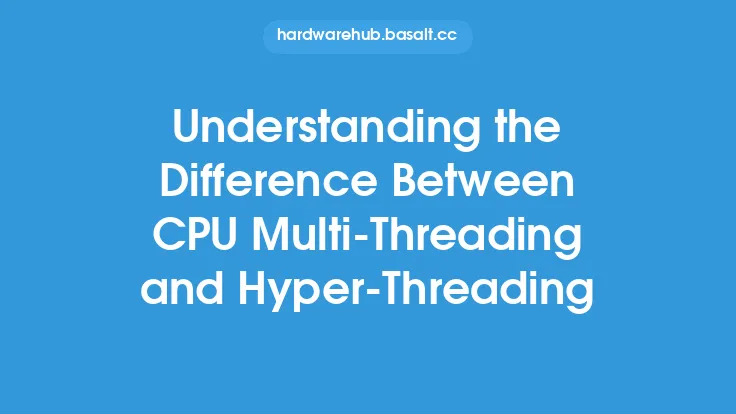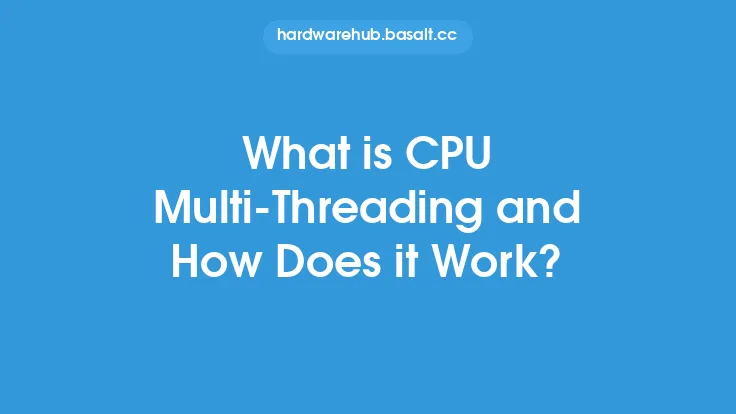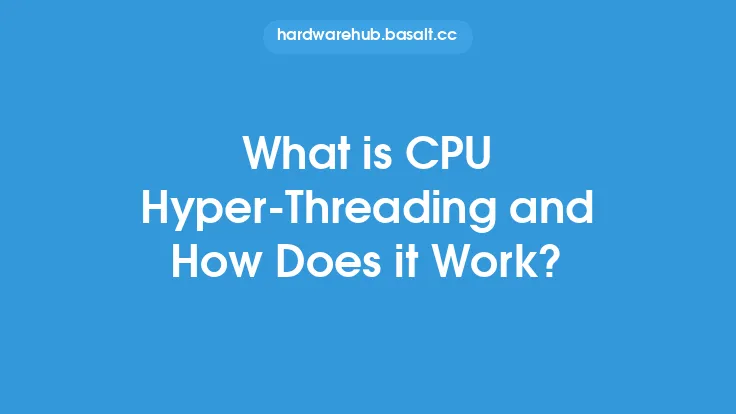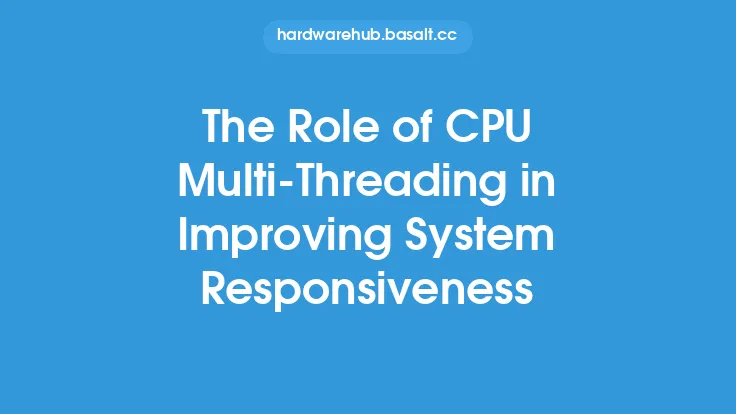When it comes to computer processing, two terms that are often mentioned together are Hyper-Threading and multi-threading. While they are related, they are not exactly the same thing. In this article, we will delve into the differences between these two concepts and explore how they work together to improve system performance.
Introduction to Hyper-Threading
Hyper-Threading is a technology developed by Intel that allows a single physical core to appear as multiple logical cores to the operating system. This is achieved by duplicating the architectural state of the core, including the registers and execution units, and allowing multiple threads to be executed concurrently. Hyper-Threading is designed to improve the performance of multithreaded applications by allowing multiple threads to be executed simultaneously, thereby increasing overall system throughput.
Introduction to Multi-Threading
Multi-threading, on the other hand, is a programming technique that allows a single application to execute multiple threads or flows of execution concurrently. This is achieved by dividing the application into smaller, independent tasks that can be executed simultaneously, improving overall system responsiveness and throughput. Multi-threading is a key feature of modern operating systems, allowing multiple applications to run concurrently and improving overall system performance.
Key Differences Between Hyper-Threading and Multi-Threading
The key difference between Hyper-Threading and multi-threading is that Hyper-Threading is a hardware technology that allows multiple threads to be executed concurrently on a single physical core, while multi-threading is a programming technique that allows multiple threads to be executed concurrently within an application. Hyper-Threading is designed to improve the performance of multithreaded applications by allowing multiple threads to be executed simultaneously, while multi-threading is designed to improve overall system responsiveness and throughput by allowing multiple applications to run concurrently.
How Hyper-Threading and Multi-Threading Work Together
Hyper-Threading and multi-threading work together to improve system performance by allowing multiple threads to be executed concurrently on multiple physical cores. When a multithreaded application is executed on a system with Hyper-Threading enabled, the operating system can schedule multiple threads to run concurrently on each physical core, improving overall system throughput. The Hyper-Threading technology allows each physical core to appear as multiple logical cores, allowing more threads to be executed concurrently and improving overall system performance.
Technical Details of Hyper-Threading
From a technical perspective, Hyper-Threading works by duplicating the architectural state of each physical core, including the registers and execution units. This allows multiple threads to be executed concurrently on each physical core, improving overall system throughput. The Hyper-Threading technology also includes a number of other features, such as thread scheduling and cache management, that are designed to improve the performance of multithreaded applications.
Technical Details of Multi-Threading
From a technical perspective, multi-threading works by dividing an application into smaller, independent tasks that can be executed simultaneously. This is achieved through the use of threads, which are lightweight processes that can be executed concurrently within an application. The operating system provides a number of APIs and libraries that allow developers to create and manage threads, including thread creation, synchronization, and communication.
Benefits of Hyper-Threading and Multi-Threading
The benefits of Hyper-Threading and multi-threading include improved system performance, increased responsiveness, and better multitasking capabilities. By allowing multiple threads to be executed concurrently, Hyper-Threading and multi-threading can improve the performance of multithreaded applications and improve overall system throughput. Additionally, Hyper-Threading and multi-threading can improve system responsiveness by allowing multiple applications to run concurrently, reducing the time it takes to switch between applications.
Conclusion
In conclusion, Hyper-Threading and multi-threading are two related but distinct concepts that work together to improve system performance. Hyper-Threading is a hardware technology that allows multiple threads to be executed concurrently on a single physical core, while multi-threading is a programming technique that allows multiple threads to be executed concurrently within an application. By understanding the differences between Hyper-Threading and multi-threading, developers and system administrators can better optimize their systems and applications to take advantage of these technologies and improve overall system performance.





